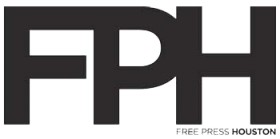By Michael Pennywark
Image: Arno Rafael Minkkinen, Self-Portrait, Kilberg, Vardø, Norway, 1990, gelatin silver print, ed. #7/25, printed 1994, the Museum of Fine Arts, Houston, gift of Joan Morgenstern. © Arno Rafael Minkkinen
Humans are drawn to the close examination of the self that we see represented every day in the mirror. It’s not surprising then to discover that self-portraits have been a staple of many artists’ work since ancient times, and painters such as Rembrandt and Van Gogh are well known for their contributions to the genre. Our very idea of self is tied up with the image we see reflected in the mirror–a thought that, for me, usually precedes an existential crisis after making the rookie mistake of staring at myself in the mirror for two hours every time my neighbor talks me into trying his ginger mint mushroom tea. Luckily, I can take comfort in the knowledge that I am probably just regressing into some form of Lacanian mirror stage and everything will be fine when I go back to looking at the pretty lights.
Of course, a much better way to reflect on those greater philosophical questions surrounding the self is to take a stroll down to the MFAH starting July 14th and check out their exhibition, Self, Model, and Self as Other. The exhibition will feature about 50 photographic self-portraits from the MFAH photography collection–spanning more than a century and revealing the different innovative approaches to the genre. While the development of the camera has made it easier to create one’s self-portrait, it can also be a more honest or revealing medium and as Anne Tucker, curator of the show, reminded me, it can also be intentionally obscuring or misleading. Ultimately it is a vision of the self and the world that the artist has chosen for us.
So what draws an artist to the self-portrait? Tucker offers the following response: “Many, if not most, of the artists and photographers I have known have a deep self-awareness. They may not use that to make images of themselves but they see themselves physically and see themselves in the context of their culture and its issues.” She also took the time to break down the show’s title to help further explain:
SELF
“Some portraits are intended to be revealing about themselves. Robert Frank, Edward Steichen, Yasuhiro Ishimoto, George Krause, and Nicola Costantino all include some element that identifies them as photographers or for Constantino, as a sculptor.” Other artists use the genre to address issues, using their own bodies and faces: John Coplans examines the aging male body, Jen Davis looks at weight issues, Kurt Weston–blindness, Robert Mapplethorpe–death, Adrain Chesser–AIDS, and Jan van Leeuwen–the Holocaust.
MODEL
It isn’t always convenient or affordable for an artist to use another person as a model, so using oneself is a great way to cut costs and potentially remove the frustration of having to direct another person. Some examples from the show include Blythe Bohnen’s documented exercise to move her face in measured directions and Cindy Sherman’s photographs which, while not about herself, are all of her.
SELF AS OTHER
As Tucker explains, some artists “use their own visage to convey their vision of others, such as Drtikol’s posing as Christ on the cross or Anne Roland covering half of her face with a photograph of the face of Dorothea Lange’s ‘Migrant Mother.’” “Kimiko Yoshida is posing as a nun in her series on brides in different cultures,” Tucker continues. Of course, there might also be other motives for the way they choose to represent themselves to the viewer. “Some are projecting a self-image: Edward Curtis posed in a dashing hat, Horst P. Horst gaining stature from posing with Gertrude Stein, Josef Sudek posing with two good friends and colleagues, Jaromir Funke and Adolf Schneeberger,” Tucker says. “Some might be projecting how they presume they are seen or how they want to be seen. In that vein, some glamorize; others do not. Taxi driver Ryan Weideman’s ‘Self Portrait with Transvestite’ is not a flattering picture. Quite a number of the photographers hide their faces behind masks, scrim, mirrors, and other devices.”
Some of the highlights of the show include a self-portrait of Mapplethorpe taken just months before he died, showing him posing with a skull-topped cane, Francesca Woodman posing with foxglove flowers, a series of pictures of Cindy Sherman by herself and of her by others, and Birgit Jürgenssen in a fox mask.
Now, if you’ll excuse me, I need to go reevaluate those Facebook photos I posted of myself last night.
Self, Model, and Self as Other
July 14, 2025 - September 29, 2025
MFAH
Beck Building, Ground Floor
5601 Main Street
Admission
Entrance to this exhibition is included with your Museum admission.
MFAH Members receive free general admission.


